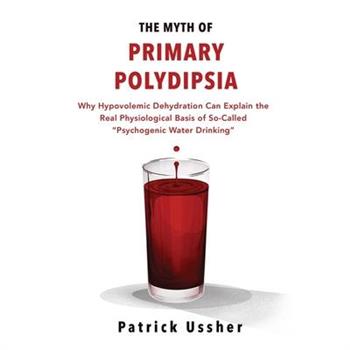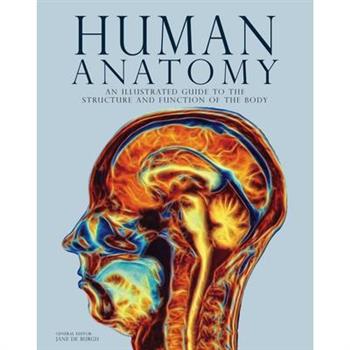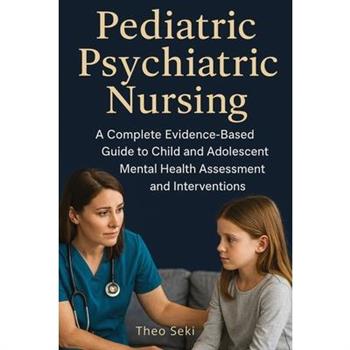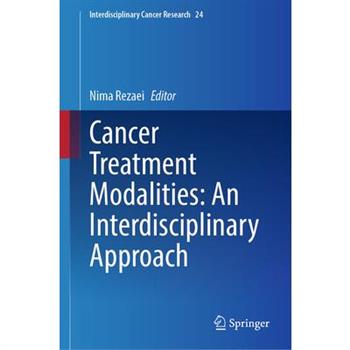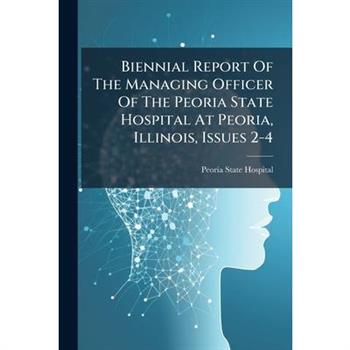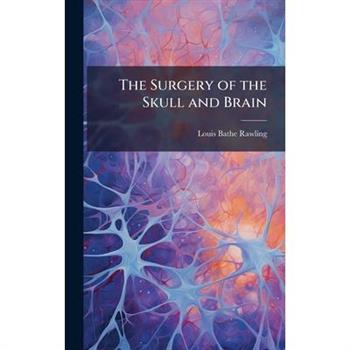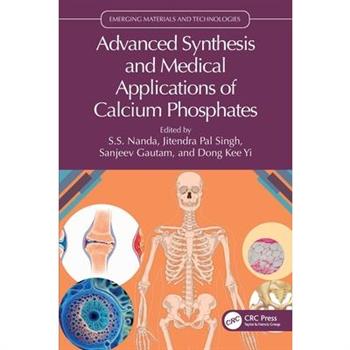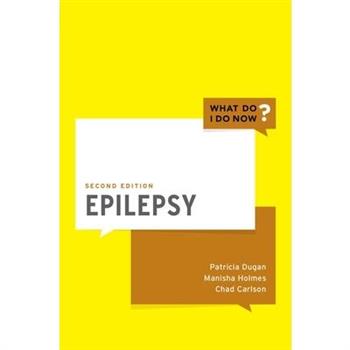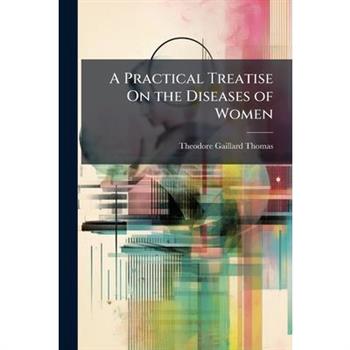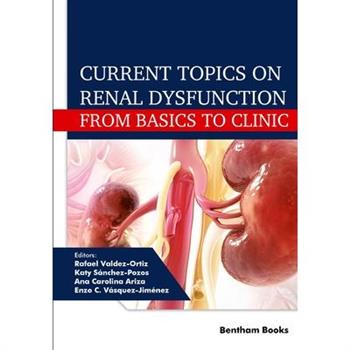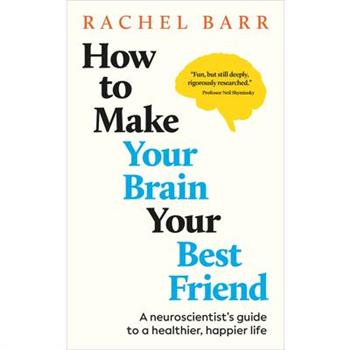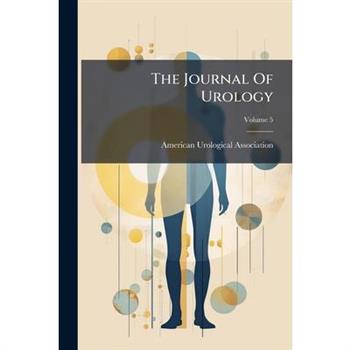Ethnopharmacologic Search for Psychoactive Drugs
The complete proceedings of the ESPD55 conference hosted by the McKenna Academy, carefully curated by Dennis McKenna. Esteemed speakers include Paul Stamets, Monica Gagliano and Wade Davis. How can we imagine the future of psychedelic therapies? How can ancestral knowledge bring depth to scientific research? What does sustainability look like for plant medicines through the indigenous perspective? Together with 30 of the most exciting minds in psychoactives research, ESPD55 conference addressed these and other fascinating topics including ayahuasca, fungi, huachuma, wilca, coca, kratom, marine sponges, and sound. Explore the world of ethnopharmacologic knowledge through various life-centric themes: the ethnosphere, phytosphere, mycosphere, faunasphere, archeosphere, sonosphere and beyond.
Human Anatomy
From the skeleton to skin cells, lungs to lymph nodes, adrenal glands to aorta, Human Anatomy provides an authoritative guide to every aspect and function of the human body. Compiled by a team of medical experts, this vivid guide combines scientifically accurate artworks with straightforward accessible language, taking the reader through the workings of human anatomy. Along the way, the book explains everything from how we digest food, to how we blink, to how the body deteriorates with age. The book is divided into 13 chapters, covering: genetics and cells; skin, hair and nails; the musculoskeletal system; the nervous system; the senses; the cardiovascular system; the respiratory system; the digestive system; the kidneys and urinary system; the lymphatic and immune systems; the endocrine system; the reproductive system; and aging and death. In these pages, the reader can learn about the workings of the shoulder joint, and role of synovial fluid in maintaining flexibility; explore the network of respiratory airways that connect the larynx to the alveoli; and understand the lymphatic system, and its essential function in defending against invading micro-organisms. With detailed annotations accompanying more than 400 accurate artworks, Human Anatomy is an easy-to-understand guide to how the body works that would make a perfect addition to every student and home library.
Pediatric Psychiatric Nursing
Pediatric Psychiatric Nursing A Complete Evidence-Based Guide to Child and Adolescent Mental Health Transform Your Pediatric Mental Health Practice with Evidence-Based Nursing Excellence This comprehensive guide fills the critical gap in pediatric psychiatric nursing education, providing nurses with the essential knowledge and practical skills needed to deliver exceptional mental health care to children and adolescents. What You'll Master: Evidence-based assessment techniques for accurate diagnosis and treatment planning across developmental stages Trauma-informed care principles that create healing environments for vulnerable youth Crisis intervention strategies for managing psychiatric emergencies safely and effectively Family-centered approaches that engage parents and caregivers as partners in recovery Cultural competency skills for serving diverse populations with respect and understanding Digital mental health innovations including telehealth and therapeutic technology applications Perfect for: BSN nursing students specializing in pediatric mental health RN-to-BSN students seeking advanced psychiatric nursing knowledge Practicing nurses transitioning to pediatric mental health settings Mental health professionals working with children and families Nursing educators developing specialized curricula Key Features: ✓ Real-world case studies and clinical scenarios ✓ Evidence-based interventions with research support ✓ Legal and ethical considerations specific to minors ✓ Practice settings from inpatient units to community programs ✓ Professional development and leadership guidance ✓ Assessment tools and documentation templates From emergency psychiatric evaluations to long-term therapeutic relationships, this resource provides the foundation for delivering compassionate, skilled care that makes a lasting difference in young lives. Build confidence in pediatric psychiatric nursing while advancing evidence-based practice standards. Essential reading for anyone committed to improving mental health outcomes for children and adolescents.
Empower Your Health
Over the course of her four-decade-long medical career, Lucia Cagnes, MD, has learned and systemically organized a wealth of pertinent scientific information and knowledge that she is eager to impart to her patients, family, friends, and now, with Empower Your Health-to you. By providing comprehensive information on the importance of early cancer diagnosis, effective screening methods, and cancer prevention strategies, this book aims to empower individuals, healthcare professionals, and communities to take proactive steps in the fight against cancer. Together, we can enhance awareness, save lives, and work toward a future free from the burden of this devastating disease.In this book, you will: Learn how our bodies can mediate the threat of cancerDiscover treatment modalities to strengthen your immune systemGain insight about the pursuit of wellness through lifestyle choicesRead about the author's personal and professional experience with HPVGet tools to empower you to take proactive steps with cancer prevention strategies
Compete and Comply
Comply. Compete. Collapse. That's the cycle narcissists want you trapped in. Through a manipulative strategy called triangulation, they pit people against each other, dangling approval like a prize and weaponizing insecurity to keep their supply desperate, divided, and dancing for scraps.In Comply and Compete: How Narcissists Use Triangulation to Manipulate Their Supply, the games are exposed for what they really are-cheap tricks dressed up as power moves. With biting sarcasm and practical insight, this book shows you exactly how narcissists manufacture jealousy, stir conflict, and create chaos in relationships, families, and workplaces.Inside, you'll discover: How triangulation makes you feel like you're in constant competition for their approval. The role of the "golden child" or "golden employee"-and why even they aren't safe.Why toxic workplaces under narcissists feel like a never-ending reality show.How to stop feeding into the drama and finally reclaim your peace.Whether you've been manipulated at home, at work, or in social circles, this book will help you stop complying, stop competing, and start cutting the strings. Because once you recognize the game, you can finally refuse to play.
Blood
"This book is the brilliant and long needed corrective that we have waited for, since the first time we stuffed a box of pads into a three-ply paper bag and slunk out of a pharmacy. Never again." --Samantha Bee New York Times bestselling author of The Menopause Manifesto and "the world's most famous and outspoken gynecologist" (The Guardian) fights myths and fearmongering with real science, inclusive facts, and shame-free advice on the topic that impacts more than 72 million Americans every month: menstruation. Most people who menstruate can expect to have hundreds of periods in a lifetime. So why is real information so hard to find? Despite its significance, most education about menstruation focuses either on increasing the chances of pregnancy or preventing it. And while both are important for many people, those who menstruate deserve to know more about their bodies than just what happens in service to reproduction. At a time when charlatans, politicians, and social media are succeeding in propagating damaging misinformation with real and devastating consequences, Dr. Jen provides the antidote with science, myth busting, and no-nonsense facts, along with answers all your period-related questions, plus essential information about topics such as: * The fascinating biology of menstruation* Menstrual migraines, PMS, and period diarrhea (yes, it's a thing, unfortunately)*Vaccines and menstruation*Legitimate menstrual products, and the facts behind toxic shock syndrome*Painful periods and endometriosis*Polycystic Ovarian Syndrome (PCOS)*Debunking social media disinformation about contraceptionBlood is about much more than biology. It's an all-in-one, revolutionary guide that will change the way we think about, talk about--and don't talk about--our bodies and our well-being."Funny, erudite, compassionate, and righteous--sometimes all in a single sentence--Jen Gunter is the period expert we need right now." --Emily Nagoski, PhD, New York Times bestselling author of Come Together "Gunter deftly shovels away the patriarchal BS that's piled up around menstruation and digs into the most effective ways to live with and manage it, treat conditions related to it, and move past the myths concocted about it. An essential resource for anyone who menstruates or thinks menstruation is a mystery." -Emily Willingham, PhD, Author of Phallacy
Endometriosis Relief Roadmap
Endometriosis Relief Roadmap is a clear, evidence-based guide for people who want straight answers and practical next steps. It explains how endometriosis is investigated, the limits of scans, and what to expect from medical and surgical care. You'll find plain-language summaries of hormonal options, pain management strategies, pelvic floor therapy, nutrition basics, and how excision differs from ablation. There is a full section on fertility planning, including timing, testing, and choices before and after surgery. What you'll learn How symptoms link to disease sites and common look-alikes What a thorough diagnostic pathway can include (history, exam, imaging, laparoscopy) Pros and cons of major treatments: combined hormonal therapy, progestins, GnRH analogues, pain protocols, pelvic floor therapy Excision vs ablation: aims, risks, recovery, and decision points Fertility: when to seek help, pre-op planning, egg/embryo options, and aftercare How to build a daily plan: flare tracking, sleep, gentle movement, pacing, and communication with your care team Tools inside Symptom and flare trackers Surgery prep and recovery checklists Questions for consultations Fertility planning worksheets This handbook keeps to current research, avoids hype, and helps you make a calm, informed plan with your clinician. No miracle claims-just tested methods, step-by-step.
Cancer Treatment Modalities: An Interdisciplinary Approach
The "Cancer Treatment Modalities: An Interdisciplinary Approach" is the twenty fourth volume of the "Interdisciplinary Cancer Research" series, publishes comprehensive volume on cancer treatment. The volume starts with a chapter on an interdisciplinary approach to biomarker discovery for cancer treatment, followed by other chapters on multidisciplinary approach in cancer management; and the interplay between inflammation and cancer progression. Cancer stem cells and mesenchymal stem cells are discussed in cancer therapy in other chapters. RNA epigenetics in cancer diagnosis and treatment as well as different aspects of telomerase inhibitors in cancer treatment are the subjected of subsequent chapters. Then bioimplants for the reconstructive surgery and the interplay of ferroptosis and cuproptosis in cancer are discussed. Liquid biopsy and cancer and mitochondrial transplantation are the subjects of other chapters. Microbial-based therapies in cancer treatment and bacteria-based approach to cancer therapy are the subjects of final chapters of this volume. This is the main concept of Cancer Immunology Project (CIP), which is a part of Universal Scientific Education and Research Network (USERN). This interdisciplinary book will be of special value for those who wish to have an update on cancer treatment.
Struck Down by the Gods
Black and White VersionThis book describes the different types of strokes; their cause, and the medical conditions often confused with stroke. Although primarily intended for the non-medical person who wants to know how to prevent stroke (and heart attacks), there is much that would be of benefit to all health care professionals. Atherosclerosis, the cause of virtually all heart attacks and a major cause of stroke, is the progressive accumulation throughout life of cholesterol beneath the inner lining of the hardened walls of our arteries. The book challenges the long-held belief that smoking, obesity, high cholesterol, diabetes, and high blood pressure are the cause of atherosclerosis. Although they make it worse, they cannot be the cause, simply because atherosclerosis occurs in the absence of these risk factors and based on irrefutable autopsy evidence, commences decades before these risk factors appear, in some of us before we are born. Many other reasons for challenging these beliefs are revealed. The book contains interesting historical facts on the evolution of knowledge throughout the centuries since ancient times, explains the difference between absolute and relative risk and benefit, and the real cause of atherosclerosis (hardening of arteries). It explains what we as individuals can do to prevent stroke (and heart attack). It discusses the risk factors that identify those of us who are at increased risk of suffering a stroke (and heart attack), in particular smoking and obesity (and the obesogenic environment we live in), that greatly increase the risk. It makes a plea to the regulatory authorities to alter the way industry funded research is conducted to provide greater certainty, in particular appointing independent data and safety monitoring committees and not allowing the industry to claim confidentiality over the study data. Finally, it makes a plea to publishers to have a clear statement on the front page stating that this study is/is not funded by industry, to ensure that all papers discuss relative (the benefit to society) and absolute (the benefit to us as an individual) risk increase and reduction, the numbers needed to treat and an economic analysis of the cost benefit. A controversial recommendation is that when a known treatment exists, any new treatment to be compared to that treatment and not to a placebo. The reasons behind these pleas are discussed in the book
Mindful Motherhood
Mindful guide to motherhood. Learn simple techniques to help you pre and post partum. Support your mental and emotional well-being. Learn why self care is so important and how it sets a positive example for your child.
Biennial Report Of The Managing Officer Of The Peoria State Hospital At Peoria, Illinois, Issues 2-4
This is a Biennial Report from the Managing Officer of the Peoria State Hospital in Peoria, Illinois. Offering insights into the administration and operations of a mental health institution, this report provides a historical snapshot of psychiatric care and hospital management during the period covered. It serves as a valuable resource for understanding the evolution of mental health treatment and institutional practices in the United States.This work has been selected by scholars as being culturally important, and is part of the knowledge base of civilization as we know it. This work was reproduced from the original artifact, and remains as true to the original work as possible. Therefore, you will see the original copyright references, library stamps (as most of these works have been housed in our most important libraries around the world), and other notations in the work.This work is in the public domain in the United States of America, and possibly other nations. Within the United States, you may freely copy and distribute this work, as no entity (individual or corporate) has a copyright on the body of the work.As a reproduction of a historical artifact, this work may contain missing or blurred pages, poor pictures, errant marks, etc. Scholars believe, and we concur, that this work is important enough to be preserved, reproduced, and made generally available to the public. We appreciate your support of the preservation process, and thank you for being an important part of keeping this knowledge alive and relevant.
The Surgery of the Skull and Brain
"The Surgery of the Skull and Brain" by Louis Bathe Rawling, first published in 1912, provides a detailed exposition of early 20th-century neurosurgical practices. This historical text offers insights into the surgical techniques, anatomical considerations, and prevailing medical knowledge of the era. Rawling's work covers a range of procedures involving the skull and brain, reflecting the pioneering efforts in a rapidly evolving field.This book serves as a valuable resource for medical historians, neurosurgeons, and anyone interested in the development of surgical interventions. It showcases the challenges and innovations that shaped modern neurosurgery, offering a glimpse into the past while appreciating the advancements in contemporary medical practice.This work has been selected by scholars as being culturally important, and is part of the knowledge base of civilization as we know it. This work was reproduced from the original artifact, and remains as true to the original work as possible. Therefore, you will see the original copyright references, library stamps (as most of these works have been housed in our most important libraries around the world), and other notations in the work.This work is in the public domain in the United States of America, and possibly other nations. Within the United States, you may freely copy and distribute this work, as no entity (individual or corporate) has a copyright on the body of the work.As a reproduction of a historical artifact, this work may contain missing or blurred pages, poor pictures, errant marks, etc. Scholars believe, and we concur, that this work is important enough to be preserved, reproduced, and made generally available to the public. We appreciate your support of the preservation process, and thank you for being an important part of keeping this knowledge alive and relevant.
Illustrated Edition of Painless Childbirth;
An illustrated guide to painless childbirth, offering advice and techniques for expectant mothers. Originally published in 1912, this book provides insights into early 20th-century approaches to pregnancy and labor. While medical practices have evolved significantly, "Illustrated Edition of Painless Childbirth" remains a valuable historical document, reflecting the concerns and knowledge of its time. Readers interested in the history of obstetrics, women's health, and the cultural context of childbirth will find this edition enlightening. The book offers a glimpse into past perspectives on pain management and the birthing process, making it a fascinating read for anyone curious about the evolution of maternal care.This work has been selected by scholars as being culturally important, and is part of the knowledge base of civilization as we know it. This work was reproduced from the original artifact, and remains as true to the original work as possible. Therefore, you will see the original copyright references, library stamps (as most of these works have been housed in our most important libraries around the world), and other notations in the work.This work is in the public domain in the United States of America, and possibly other nations. Within the United States, you may freely copy and distribute this work, as no entity (individual or corporate) has a copyright on the body of the work.As a reproduction of a historical artifact, this work may contain missing or blurred pages, poor pictures, errant marks, etc. Scholars believe, and we concur, that this work is important enough to be preserved, reproduced, and made generally available to the public. We appreciate your support of the preservation process, and thank you for being an important part of keeping this knowledge alive and relevant.
Text-book on Diseases of the Heart
"Text-book on Diseases of the Heart" (1906) offers a comprehensive overview of cardiology at the beginning of the 20th century. Written by Graham Steell and James Lorrain Smith, this volume presents the state of medical knowledge regarding heart conditions, their diagnosis, and treatment during that era. This book provides insights into the medical practices and understanding of cardiac ailments of the time. As a historical artifact, it serves as a valuable resource for those interested in the evolution of medical science and the advancements in cardiology over the past century. It offers a unique perspective on the challenges faced by physicians in diagnosing and treating heart diseases before modern technology and pharmaceuticals were available. The work is essential for medical historians and anyone curious about the development of cardiology.This work has been selected by scholars as being culturally important, and is part of the knowledge base of civilization as we know it. This work was reproduced from the original artifact, and remains as true to the original work as possible. Therefore, you will see the original copyright references, library stamps (as most of these works have been housed in our most important libraries around the world), and other notations in the work.This work is in the public domain in the United States of America, and possibly other nations. Within the United States, you may freely copy and distribute this work, as no entity (individual or corporate) has a copyright on the body of the work.As a reproduction of a historical artifact, this work may contain missing or blurred pages, poor pictures, errant marks, etc. Scholars believe, and we concur, that this work is important enough to be preserved, reproduced, and made generally available to the public. We appreciate your support of the preservation process, and thank you for being an important part of keeping this knowledge alive and relevant.
Advanced Synthesis and Medical Applications of Calcium Phosphates
Calcium phosphate materials are used in many medical and dental applications. Advanced Synthesis and Medical Applications of Calcium Phosphates covers the structure, chemistry, synthesis, and properties of both natural and synthetic calcium-based biomaterials and details a variety of medical applications. Depicts the latest advances in using calcium phosphates in bone regeneration and tissue engineering Includes the latest generation of regenerative biomaterials with an integrated perspective combining both research and clinical issues Provides an understanding of the clinical targets and requirements for regenerative medicine Detailing fundamentals through applications, this book helps biomaterials researchers to better understand the clinical targets and requirements for use of these materials for optimal synthesis and development.
Epilepsy
Part of the "What Do I Do Now?" series, Epilepsy (Second Edition) serves as an easy-to-use reference guide for anyone working with epilepsy patients. This book offers a case-based approach to give a holistic look at concepts for understanding and treating epilepsy. These concepts range from initial diagnosis to determining treatment options to understanding the role of epilepsy in patients' day-to-day life. Topics represent common clinical scenarios and frequent areas assessed in standardized examinations.The book includes 33 case studies and is broken up into four parts: Section 1: Diagnostic Dilemmas; Section 2: Treatment Considerations: Antiseizure Medications; Section 3: Treatment Considerations: Diagnosis and Management of Refractory Epilepsy; and Section 4: Prognostic, Neuropsychiatric, Social, and Behavioral Issues. Each case study provides a discussion of the diagnosis, key points to remember, and selected references for further reading. In this new edition, all cases and references have been updated, reflecting the advances in pharmacological treatment and understanding of epilepsy in the past ten years. Engaging and succinct, Epilepsy, Second Edition, is an essential resource for clinicians and students at any stage in their career.
The Eye and Nervous System, Their Diagnostic Relations
"The Eye and Nervous System, Their Diagnostic Relations," edited by William Campbell Posey and William G. Spiller, delves into the intricate connections between ophthalmology and neurology at the beginning of the 20th century. This historical work explores how ocular manifestations can provide crucial insights into diagnosing conditions of the nervous system. Posey and Spiller present a comprehensive overview of the diagnostic relationships between the eye and nervous system, offering valuable information for physicians and researchers of the time. The book serves as a window into early neuro-ophthalmology, illustrating the diagnostic techniques and medical understanding prevalent in the early 1900s. This volume is a valuable resource for anyone interested in the history of medicine, particularly the evolution of neurology, ophthalmology, and diagnostic practices. It provides a unique perspective on the development of medical knowledge and the methodologies used to understand complex neurological conditions through the examination of the eye.This work has been selected by scholars as being culturally important, and is part of the knowledge base of civilization as we know it. This work was reproduced from the original artifact, and remains as true to the original work as possible. Therefore, you will see the original copyright references, library stamps (as most of these works have been housed in our most important libraries around the world), and other notations in the work.This work is in the public domain in the United States of America, and possibly other nations. Within the United States, you may freely copy and distribute this work, as no entity (individual or corporate) has a copyright on the body of the work.As a reproduction of a historical artifact, this work may contain missing or blurred pages, poor pictures, errant marks, etc. Scholars believe, and we concur, that this work is important enough to be preserved, reproduced, and made generally available to the public. We appreciate your support of the preservation process, and thank you for being an important part of keeping this knowledge alive and relevant.
A Practical Treatise On the Diseases of Women
A Practical Treatise On the Diseases of Women, by Theodore Gaillard Thomas, is a comprehensive guide to the medical conditions affecting women during the late 19th century. This detailed work offers insights into the diagnostic and therapeutic practices prevalent at the time. With meticulous descriptions of various diseases and their treatments, this treatise provides a valuable resource for understanding the historical context of women's healthcare. Originally published in 1891, this book remains an important historical document, shedding light on the medical challenges and advancements of the era. It offers a glimpse into the evolving understanding of gynecology and women's health, making it an essential addition to any collection focused on medical history.This work has been selected by scholars as being culturally important, and is part of the knowledge base of civilization as we know it. This work was reproduced from the original artifact, and remains as true to the original work as possible. Therefore, you will see the original copyright references, library stamps (as most of these works have been housed in our most important libraries around the world), and other notations in the work.This work is in the public domain in the United States of America, and possibly other nations. Within the United States, you may freely copy and distribute this work, as no entity (individual or corporate) has a copyright on the body of the work.As a reproduction of a historical artifact, this work may contain missing or blurred pages, poor pictures, errant marks, etc. Scholars believe, and we concur, that this work is important enough to be preserved, reproduced, and made generally available to the public. We appreciate your support of the preservation process, and thank you for being an important part of keeping this knowledge alive and relevant.
Organic and Functional Nervous Diseases
"Organic and Functional Nervous Diseases: A Text-Book of Neurology" by Moses Allen Starr is a comprehensive exploration of neurological disorders. This meticulously detailed volume delves into the intricacies of both organic and functional diseases affecting the nervous system, providing a thorough understanding of their pathology, symptoms, and diagnostic approaches. Designed as a textbook, it offers students and practitioners alike a structured and in-depth analysis of various neurological conditions. Starr's expertise shines through in his clear explanations and systematic presentation, making this work an invaluable resource for anyone seeking a deeper knowledge of neurology. This book remains a significant contribution to the field, offering insights that are still relevant for understanding the complexities of nervous system diseases.This work has been selected by scholars as being culturally important, and is part of the knowledge base of civilization as we know it. This work was reproduced from the original artifact, and remains as true to the original work as possible. Therefore, you will see the original copyright references, library stamps (as most of these works have been housed in our most important libraries around the world), and other notations in the work.This work is in the public domain in the United States of America, and possibly other nations. Within the United States, you may freely copy and distribute this work, as no entity (individual or corporate) has a copyright on the body of the work.As a reproduction of a historical artifact, this work may contain missing or blurred pages, poor pictures, errant marks, etc. Scholars believe, and we concur, that this work is important enough to be preserved, reproduced, and made generally available to the public. We appreciate your support of the preservation process, and thank you for being an important part of keeping this knowledge alive and relevant.
A Practical Treatise On the Diseases of Women
A Practical Treatise On the Diseases of Women, by Theodore Gaillard Thomas, is a comprehensive guide to the medical conditions affecting women during the late 19th century. This detailed work offers insights into the diagnostic and therapeutic practices prevalent at the time. With meticulous descriptions of various diseases and their treatments, this treatise provides a valuable resource for understanding the historical context of women's healthcare. Originally published in 1891, this book remains an important historical document, shedding light on the medical challenges and advancements of the era. It offers a glimpse into the evolving understanding of gynecology and women's health, making it an essential addition to any collection focused on medical history.This work has been selected by scholars as being culturally important, and is part of the knowledge base of civilization as we know it. This work was reproduced from the original artifact, and remains as true to the original work as possible. Therefore, you will see the original copyright references, library stamps (as most of these works have been housed in our most important libraries around the world), and other notations in the work.This work is in the public domain in the United States of America, and possibly other nations. Within the United States, you may freely copy and distribute this work, as no entity (individual or corporate) has a copyright on the body of the work.As a reproduction of a historical artifact, this work may contain missing or blurred pages, poor pictures, errant marks, etc. Scholars believe, and we concur, that this work is important enough to be preserved, reproduced, and made generally available to the public. We appreciate your support of the preservation process, and thank you for being an important part of keeping this knowledge alive and relevant.
Organic and Functional Nervous Diseases
"Organic and Functional Nervous Diseases: A Text-Book of Neurology" by Moses Allen Starr is a comprehensive exploration of neurological disorders. This meticulously detailed volume delves into the intricacies of both organic and functional diseases affecting the nervous system, providing a thorough understanding of their pathology, symptoms, and diagnostic approaches. Designed as a textbook, it offers students and practitioners alike a structured and in-depth analysis of various neurological conditions. Starr's expertise shines through in his clear explanations and systematic presentation, making this work an invaluable resource for anyone seeking a deeper knowledge of neurology. This book remains a significant contribution to the field, offering insights that are still relevant for understanding the complexities of nervous system diseases.This work has been selected by scholars as being culturally important, and is part of the knowledge base of civilization as we know it. This work was reproduced from the original artifact, and remains as true to the original work as possible. Therefore, you will see the original copyright references, library stamps (as most of these works have been housed in our most important libraries around the world), and other notations in the work.This work is in the public domain in the United States of America, and possibly other nations. Within the United States, you may freely copy and distribute this work, as no entity (individual or corporate) has a copyright on the body of the work.As a reproduction of a historical artifact, this work may contain missing or blurred pages, poor pictures, errant marks, etc. Scholars believe, and we concur, that this work is important enough to be preserved, reproduced, and made generally available to the public. We appreciate your support of the preservation process, and thank you for being an important part of keeping this knowledge alive and relevant.
Kern's Cardiac Catheterization Handbook
Clearly written, highly illustrated, and designed for quick reference, Kern's Cardiac Catheterization Handbook, 8th Edition, is the resource of choice for every member of the cardiac cath team. Widely regarded as the "bible" of cardiac catheterization, this portable, accessible primer provides a straightforward, practical explanation of the lab and its complex procedures for cardiac fellows, residents, nurses, and all cath lab personnel. Initial chapters assist the novice with descriptions of how procedures flow, what steps to learn first, and other essential information. Later chapters are devoted to special techniques, high-risk procedures, research techniques, percutaneous coronary interventions, and optimization of outcomes-all with a focus on treatment protocols for every procedure.Provides clear instructions on what to expect, what to avoid, and how to manage complications for every procedure you'll encounter-including coverage of new techniques and technologies that affect virtually all aspects of familiar proceduresCovers all the newest catheterization techniques for vascular closure and expansion of large-bore access procedures, including TAVR, ECMO, mitraclip, and TMVRDiscusses key topics such as intracardiac echocardiography and intraprocedural imaging, management of complications with algorithms that expedite the approach to these patients, adjunctive hemodynamic support, and maintaining quality in the laboratoryEmphasizes indications and contraindications for procedures in the context of a multidisciplinary heart team approachIncludes numerous clear illustrations and a newly expanded video library to enhance your understanding of the materialAn eBook version is included with purchase. The eBook allows you to access all of the text, figures, and references, with the ability to search, customize your content, make notes and highlights, and have content read aloud. Additional digital ancillary content may publish up to 6 weeks following the publication date
Current Topics on Renal Dysfunction
With renal dysfunction affecting millions worldwide, this book presents a timely and integrative look at emerging insights-from molecular foundations to clinical management. It explores the intricate mechanisms, systemic impact, and clinical complexities of kidney diseases in a multidisciplinary context. Spanning a broad spectrum of conditions, the book addresses renal tubular acidosis, polycystic kidney disease, renal lithiasis, diabetic kidney disease, and sodium imbalance-linked hypertension. Chapters delve into nephrotoxicity, loss of cellular identity in renal carcinoma, epigenetics, dysbiosis, and the evolving role of SGLT2 inhibitors. The book also highlights innovative approaches such as stem cell therapy and the systemic immune interactions that underlie chronic kidney injury. Key Features: -Examines genetic and epigenetic underpinnings of renal disease. -Explores microbiota and immune system crosstalk in kidney pathology. -Discusses both acute and chronic conditions with clinical relevance. -Integrates foundational science with translational perspectives. -Includes emerging therapies and precision medicine approaches.
McGee's Evidence-Based Physical Diagnosis
Emphasizing the most important physical signs needed to determine an underlying condition or disease, McGee's Evidence-Based Physical Diagnosis, Sixth Edition, offers vital insight and instruction on the fundamental clinical skill of physical diagnosis. Internationally renowned author Dr. Steven McGee clearly shows how to pare down the multiple tests needed to confirm a diagnosis, saving both the physician and patient time, energy, and expense. This unique resource provides evidence-based guidance that, combined with modern technologic testing, will grant clinicians the keys to outstanding patient care.Features a reader-friendly outline format, including dozens of "EBM boxes" and accompanying "EBM ruler" illustrationsContains thorough updates from cover to cover, including revisions to ensure currency with research developments, updated references, numerous new physical findings, and updated EBM boxes with recalculated likelihood ratiosFeatures a unique, up-to-date, evidence-based calculator online that enables you to easily determine probability using likelihood ratiosCovers the conditions and diseases you're most likely to encounter, including stance and gait, jaundice, anemia, obesity, Cushing syndrome, mental status examination, blood pressure, diabetic retinopathy, hearing, pneumonia, pulmonary embolism, heart murmurs, abdominal pain and tenderness, stroke, and much moreBegins each chapter with a list of Key Teaching Points, intended for readers desiring quick summaries and for teachers constructing concise bedside lessonsAn eBook version is included with purchase. The eBook allows you to access all of the text, figures, and references, with the ability to search, customize your content, make notes and highlights, and have content read aloud. Additional digital ancillary content may publish up to 6 weeks following the publication date
How to Make Your Brain Your Best Friend
Your brain is the most remarkable thing in the known universe. 'Fun, but still deeply, rigorously researched.' - Professor Neil Shyminsky 'A true masterpiece. Rachel Barr has done a phenomenal job breaking down the complexities of the human mind.' - Jeffrey Meltzer, LMHC 'Insightful and relatable psychoeducation that demystifies the brain . . . it's a resource I'll proudly keep on my shelf as a therapist.' - Joshua Fletcher, anxiety therapistAlways trying to mend itself, and always trying to protect you, it's in a constant state of flux -- adapting, reconfiguring, finding new pathways . . . And it has an astonishing capacity for recovery. Only it doesn't always get it right. Rachel Barr struggled through years of devastating loss, heartache, and uncertainty until neuroscience gave her the first spark of self-belief she had felt in her adult life -- and proof that, because of the brain's near-infinite potential for neuroplastic change, it's never too late to carve out neural pathways to form new habits, new skills, and new ways of thinking. Whether you want to nerd-out on Neuroscientific acronyms, finally understand what's going on in your head, or take refuge in a book that's like a warm hug for your mind, How to Make Your Brain Your Best Friend is a delight-filled, evidence-based guide to taking better care of your brain -- so it, in turn, will take better care of you.
Cancer Cures And Cancer Curers
"Cancer Cures And Cancer Curers" explores the historical search for effective treatments for cancer, examining both conventional and alternative approaches. Spencer Wells delves into the evolution of cancer therapies and the individuals who have dedicated their lives to finding a cure. This book examines the claims made by various 璽€~cancer curers' throughout history, offering insights into the scientific validity, or lack thereof, of their methods. It's a historical account of the ongoing battle against cancer, highlighting the complexities and controversies that have shaped the field of oncology.This work has been selected by scholars as being culturally important, and is part of the knowledge base of civilization as we know it. This work was reproduced from the original artifact, and remains as true to the original work as possible. Therefore, you will see the original copyright references, library stamps (as most of these works have been housed in our most important libraries around the world), and other notations in the work.This work is in the public domain in the United States of America, and possibly other nations. Within the United States, you may freely copy and distribute this work, as no entity (individual or corporate) has a copyright on the body of the work.As a reproduction of a historical artifact, this work may contain missing or blurred pages, poor pictures, errant marks, etc. Scholars believe, and we concur, that this work is important enough to be preserved, reproduced, and made generally available to the public. We appreciate your support of the preservation process, and thank you for being an important part of keeping this knowledge alive and relevant.
Surgery, Its Principles And Practice
"Surgery, Its Principles And Practice, Volume 2" by William Williams Keen offers a detailed exploration of surgical techniques and principles as understood at the time of its publication. This volume provides insights into the historical context of surgical procedures, reflecting the knowledge and practices prevalent during that era. It serves as a valuable resource for those interested in the evolution of surgical methods and the historical development of medical science. Keen's work is a testament to the enduring pursuit of medical advancement and offers a unique perspective on the challenges and triumphs of early surgical intervention. It remains relevant for medical historians, students, and anyone seeking a deeper understanding of the foundations upon which modern surgery is built.This work has been selected by scholars as being culturally important, and is part of the knowledge base of civilization as we know it. This work was reproduced from the original artifact, and remains as true to the original work as possible. Therefore, you will see the original copyright references, library stamps (as most of these works have been housed in our most important libraries around the world), and other notations in the work.This work is in the public domain in the United States of America, and possibly other nations. Within the United States, you may freely copy and distribute this work, as no entity (individual or corporate) has a copyright on the body of the work.As a reproduction of a historical artifact, this work may contain missing or blurred pages, poor pictures, errant marks, etc. Scholars believe, and we concur, that this work is important enough to be preserved, reproduced, and made generally available to the public. We appreciate your support of the preservation process, and thank you for being an important part of keeping this knowledge alive and relevant.
The Vermiform Appendix
This book deals with all the aspects related to such an organ. The appendix has been considered a vestigial remnant until the recent discoveries about its active immunologic function. It is particularly important for people living in poor areas of the world to restore the bacterial flora after infections. In addition, the appendix seems to exert an effect in the development of immune-related diseases spreading in developed countries, according to the theory of the safe house. The book is divided in three parts: The first is dedicated to embryology, anatomy and physiology. The second and third ones are dedicated to diagnosis and treatment of inflammatory and neoplastic diseases.
The Journal Of Mental Science
"The Journal of Mental Science, Volume 48" offers a detailed look into the understanding and treatment of mental illness during its time. Published by the Association of Medical Officers of Asylums and Hospitals for the Insane, the Medico-Psychological Association of Great Britain and Ireland, and the Royal Medico-Psychological Association, this volume presents a collection of articles, case studies, and discussions reflecting the prevailing medical and psychological perspectives. It provides valuable insights into the historical context of mental health care, the evolution of psychiatric theories, and the challenges faced by medical professionals in asylums and hospitals. This journal serves as an important resource for historians of medicine, psychologists, and anyone interested in the development of mental health practices.This work has been selected by scholars as being culturally important, and is part of the knowledge base of civilization as we know it. This work was reproduced from the original artifact, and remains as true to the original work as possible. Therefore, you will see the original copyright references, library stamps (as most of these works have been housed in our most important libraries around the world), and other notations in the work.This work is in the public domain in the United States of America, and possibly other nations. Within the United States, you may freely copy and distribute this work, as no entity (individual or corporate) has a copyright on the body of the work.As a reproduction of a historical artifact, this work may contain missing or blurred pages, poor pictures, errant marks, etc. Scholars believe, and we concur, that this work is important enough to be preserved, reproduced, and made generally available to the public. We appreciate your support of the preservation process, and thank you for being an important part of keeping this knowledge alive and relevant.
Surgical After-Treatment
"Surgical After-Treatment" offers a detailed guide to the postoperative care practices prevalent in the early 20th century. Written by Le Roi Goddard Crandon, this historical text provides insights into the surgical techniques and recovery protocols of its time. The book meticulously covers various aspects of patient management following surgical interventions, reflecting the state of medical knowledge and practice during this period. This book serves as a valuable resource for historians of medicine, students, and anyone interested in understanding the evolution of surgical care. It offers a unique perspective on how medical professionals approached patient recovery and the challenges they faced in the pre-antibiotic era. Explore the methods and insights that shaped modern surgical after-treatment through this meticulously detailed historical account.This work has been selected by scholars as being culturally important, and is part of the knowledge base of civilization as we know it. This work was reproduced from the original artifact, and remains as true to the original work as possible. Therefore, you will see the original copyright references, library stamps (as most of these works have been housed in our most important libraries around the world), and other notations in the work.This work is in the public domain in the United States of America, and possibly other nations. Within the United States, you may freely copy and distribute this work, as no entity (individual or corporate) has a copyright on the body of the work.As a reproduction of a historical artifact, this work may contain missing or blurred pages, poor pictures, errant marks, etc. Scholars believe, and we concur, that this work is important enough to be preserved, reproduced, and made generally available to the public. We appreciate your support of the preservation process, and thank you for being an important part of keeping this knowledge alive and relevant.
The Journal Of Urology
"The Journal Of Urology", the official journal of the American Urological Association, presents Volume 5. This esteemed publication serves as a key resource for urologists and medical professionals seeking the latest research, clinical findings, and advancements in the field. Published by the American Urological Association, this volume continues the journal's tradition of excellence in disseminating vital information relevant to the diagnosis, treatment, and understanding of urological conditions.Featuring contributions from leading experts, "The Journal Of Urology" offers in-depth insights into various aspects of urology, making it an indispensable addition to medical libraries and a valuable tool for practitioners dedicated to providing the highest quality of care. This work has been selected by scholars as being culturally important, and is part of the knowledge base of civilization as we know it. This work was reproduced from the original artifact, and remains as true to the original work as possible. Therefore, you will see the original copyright references, library stamps (as most of these works have been housed in our most important libraries around the world), and other notations in the work.This work is in the public domain in the United States of America, and possibly other nations. Within the United States, you may freely copy and distribute this work, as no entity (individual or corporate) has a copyright on the body of the work.As a reproduction of a historical artifact, this work may contain missing or blurred pages, poor pictures, errant marks, etc. Scholars believe, and we concur, that this work is important enough to be preserved, reproduced, and made generally available to the public. We appreciate your support of the preservation process, and thank you for being an important part of keeping this knowledge alive and relevant.
Annual Report...1860-1907, Issues 20-35
This collection comprises the Annual Reports of the Cincinnati Longview Hospital, spanning the years 1860-1907, specifically Issues 20-35. These reports offer a detailed look into the operations, patient care, and administrative functions of a significant psychiatric institution during a pivotal period in the development of mental health treatment in the United States. Researchers and historians will find valuable primary source material documenting the evolution of psychiatric practices, the demographics of patient populations, and the challenges faced by institutions dedicated to mental healthcare in the late 19th and early 20th centuries. The reports provide insights into the social attitudes toward mental illness, the approaches to treatment, and the internal workings of a major hospital in the Midwest.This work has been selected by scholars as being culturally important, and is part of the knowledge base of civilization as we know it. This work was reproduced from the original artifact, and remains as true to the original work as possible. Therefore, you will see the original copyright references, library stamps (as most of these works have been housed in our most important libraries around the world), and other notations in the work.This work is in the public domain in the United States of America, and possibly other nations. Within the United States, you may freely copy and distribute this work, as no entity (individual or corporate) has a copyright on the body of the work.As a reproduction of a historical artifact, this work may contain missing or blurred pages, poor pictures, errant marks, etc. Scholars believe, and we concur, that this work is important enough to be preserved, reproduced, and made generally available to the public. We appreciate your support of the preservation process, and thank you for being an important part of keeping this knowledge alive and relevant.
Cancer Cures And Cancer Curers
"Cancer Cures And Cancer Curers" explores the historical search for effective treatments for cancer, examining both conventional and alternative approaches. Spencer Wells delves into the evolution of cancer therapies and the individuals who have dedicated their lives to finding a cure. This book examines the claims made by various 璽€~cancer curers' throughout history, offering insights into the scientific validity, or lack thereof, of their methods. It's a historical account of the ongoing battle against cancer, highlighting the complexities and controversies that have shaped the field of oncology.This work has been selected by scholars as being culturally important, and is part of the knowledge base of civilization as we know it. This work was reproduced from the original artifact, and remains as true to the original work as possible. Therefore, you will see the original copyright references, library stamps (as most of these works have been housed in our most important libraries around the world), and other notations in the work.This work is in the public domain in the United States of America, and possibly other nations. Within the United States, you may freely copy and distribute this work, as no entity (individual or corporate) has a copyright on the body of the work.As a reproduction of a historical artifact, this work may contain missing or blurred pages, poor pictures, errant marks, etc. Scholars believe, and we concur, that this work is important enough to be preserved, reproduced, and made generally available to the public. We appreciate your support of the preservation process, and thank you for being an important part of keeping this knowledge alive and relevant.
American Journal of Psychiatry
Explore the landscape of psychiatric research and clinical practice with the "American Journal of Psychiatry, Volume 71." This comprehensive volume presents a collection of articles covering diverse topics within the field, offering insights into diagnosis, treatment, and understanding of mental health disorders. A vital resource for psychiatrists, psychologists, researchers, and anyone interested in the advancements shaping modern psychiatric care, this journal provides a detailed look into the scientific investigations and scholarly discussions defining contemporary mental health practices. Delve into the studies and analyses that contribute to our evolving comprehension of the human mind and its complexities.This work has been selected by scholars as being culturally important, and is part of the knowledge base of civilization as we know it. This work was reproduced from the original artifact, and remains as true to the original work as possible. Therefore, you will see the original copyright references, library stamps (as most of these works have been housed in our most important libraries around the world), and other notations in the work.This work is in the public domain in the United States of America, and possibly other nations. Within the United States, you may freely copy and distribute this work, as no entity (individual or corporate) has a copyright on the body of the work.As a reproduction of a historical artifact, this work may contain missing or blurred pages, poor pictures, errant marks, etc. Scholars believe, and we concur, that this work is important enough to be preserved, reproduced, and made generally available to the public. We appreciate your support of the preservation process, and thank you for being an important part of keeping this knowledge alive and relevant.
The Use And Effect Of Alcohol In Relation To The Alcoholic Psychoses
"The Use And Effect Of Alcohol In Relation To The Alcoholic Psychoses" explores the intricate relationship between alcohol consumption and the development of alcoholic psychoses. Authored by Horatio Milo Pollock, this work delves into the effects of alcohol on mental health, providing insights into the psychiatric conditions associated with chronic alcohol use. This book offers a valuable resource for researchers, clinicians, and anyone interested in understanding the complexities of alcohol-related mental disorders. It examines the mechanisms by which alcohol impacts the brain and contributes to the onset of psychoses, offering a comprehensive overview of this critical area of study.This work has been selected by scholars as being culturally important, and is part of the knowledge base of civilization as we know it. This work was reproduced from the original artifact, and remains as true to the original work as possible. Therefore, you will see the original copyright references, library stamps (as most of these works have been housed in our most important libraries around the world), and other notations in the work.This work is in the public domain in the United States of America, and possibly other nations. Within the United States, you may freely copy and distribute this work, as no entity (individual or corporate) has a copyright on the body of the work.As a reproduction of a historical artifact, this work may contain missing or blurred pages, poor pictures, errant marks, etc. Scholars believe, and we concur, that this work is important enough to be preserved, reproduced, and made generally available to the public. We appreciate your support of the preservation process, and thank you for being an important part of keeping this knowledge alive and relevant.
An Illustrated System Of Bandaging
"An Illustrated System Of Bandaging," selected from Goffres' "Precis De Bandages," offers a detailed look at surgical bandaging techniques of the mid-19th century. This historical text, likely used during the American Civil War, provides insights into the medical practices and challenges faced by surgeons of the time. The illustrations offer a visual guide to various bandaging methods, showcasing the ingenuity and resourcefulness applied to patient care during a period of limited medical technology.This volume serves as a valuable resource for historians, medical professionals, and anyone interested in the evolution of surgical procedures. It is a testament to the enduring importance of basic medical skills and the continuous quest to improve patient outcomes, even in the face of adversity. This book provides a window into the past, reminding us of the progress made in modern medicine while honoring the foundational knowledge upon which it is built.This work has been selected by scholars as being culturally important, and is part of the knowledge base of civilization as we know it. This work was reproduced from the original artifact, and remains as true to the original work as possible. Therefore, you will see the original copyright references, library stamps (as most of these works have been housed in our most important libraries around the world), and other notations in the work.This work is in the public domain in the United States of America, and possibly other nations. Within the United States, you may freely copy and distribute this work, as no entity (individual or corporate) has a copyright on the body of the work.As a reproduction of a historical artifact, this work may contain missing or blurred pages, poor pictures, errant marks, etc. Scholars believe, and we concur, that this work is important enough to be preserved, reproduced, and made generally available to the public. We appreciate your support of the preservation process, and thank you for being an important part of keeping this knowledge alive and relevant.
Annual Report Of The Board Of Trustees And Officers Of The Central Ohio Lunatic Asylum, To The Governor Of Ohio. For The Year ..., Volumes 19-35
This collection comprises volumes 19 through 35 of the "Annual Report Of The Board Of Trustees And Officers Of The Central Ohio Lunatic Asylum," presented to the Governor of Ohio. These reports offer a detailed glimpse into the operations, patient care, and administrative functions of the asylum during the specified years. Researchers and historians will find valuable insights into the evolving practices of mental health treatment, the socio-economic factors influencing institutional care, and the administrative challenges faced by the asylum's leadership. The annual reports provide statistical data, budgetary information, and narratives of institutional life, making them an indispensable resource for understanding the history of mental health care in Ohio and the broader United States.This work has been selected by scholars as being culturally important, and is part of the knowledge base of civilization as we know it. This work was reproduced from the original artifact, and remains as true to the original work as possible. Therefore, you will see the original copyright references, library stamps (as most of these works have been housed in our most important libraries around the world), and other notations in the work.This work is in the public domain in the United States of America, and possibly other nations. Within the United States, you may freely copy and distribute this work, as no entity (individual or corporate) has a copyright on the body of the work.As a reproduction of a historical artifact, this work may contain missing or blurred pages, poor pictures, errant marks, etc. Scholars believe, and we concur, that this work is important enough to be preserved, reproduced, and made generally available to the public. We appreciate your support of the preservation process, and thank you for being an important part of keeping this knowledge alive and relevant.
Annual Report Of The Board Of Trustees And Officers Of The Central Ohio Lunatic Asylum, To The Governor Of Ohio. For The Year ..., Volumes 19-35
This collection comprises volumes 19 through 35 of the "Annual Report Of The Board Of Trustees And Officers Of The Central Ohio Lunatic Asylum," presented to the Governor of Ohio. These reports offer a detailed glimpse into the operations, patient care, and administrative functions of the asylum during the specified years. Researchers and historians will find valuable insights into the evolving practices of mental health treatment, the socio-economic factors influencing institutional care, and the administrative challenges faced by the asylum's leadership. The annual reports provide statistical data, budgetary information, and narratives of institutional life, making them an indispensable resource for understanding the history of mental health care in Ohio and the broader United States.This work has been selected by scholars as being culturally important, and is part of the knowledge base of civilization as we know it. This work was reproduced from the original artifact, and remains as true to the original work as possible. Therefore, you will see the original copyright references, library stamps (as most of these works have been housed in our most important libraries around the world), and other notations in the work.This work is in the public domain in the United States of America, and possibly other nations. Within the United States, you may freely copy and distribute this work, as no entity (individual or corporate) has a copyright on the body of the work.As a reproduction of a historical artifact, this work may contain missing or blurred pages, poor pictures, errant marks, etc. Scholars believe, and we concur, that this work is important enough to be preserved, reproduced, and made generally available to the public. We appreciate your support of the preservation process, and thank you for being an important part of keeping this knowledge alive and relevant.
An Illustrated System Of Bandaging
"An Illustrated System Of Bandaging," selected from Goffres' "Precis De Bandages," offers a detailed look at surgical bandaging techniques of the mid-19th century. This historical text, likely used during the American Civil War, provides insights into the medical practices and challenges faced by surgeons of the time. The illustrations offer a visual guide to various bandaging methods, showcasing the ingenuity and resourcefulness applied to patient care during a period of limited medical technology.This volume serves as a valuable resource for historians, medical professionals, and anyone interested in the evolution of surgical procedures. It is a testament to the enduring importance of basic medical skills and the continuous quest to improve patient outcomes, even in the face of adversity. This book provides a window into the past, reminding us of the progress made in modern medicine while honoring the foundational knowledge upon which it is built.This work has been selected by scholars as being culturally important, and is part of the knowledge base of civilization as we know it. This work was reproduced from the original artifact, and remains as true to the original work as possible. Therefore, you will see the original copyright references, library stamps (as most of these works have been housed in our most important libraries around the world), and other notations in the work.This work is in the public domain in the United States of America, and possibly other nations. Within the United States, you may freely copy and distribute this work, as no entity (individual or corporate) has a copyright on the body of the work.As a reproduction of a historical artifact, this work may contain missing or blurred pages, poor pictures, errant marks, etc. Scholars believe, and we concur, that this work is important enough to be preserved, reproduced, and made generally available to the public. We appreciate your support of the preservation process, and thank you for being an important part of keeping this knowledge alive and relevant.
Speech anxiety and Stuttering
Your Practical Guide to Speaking Without Fear This concise yet empowering guide goes beyond traditional approaches to stuttering, addressing the deeper emotional, mental, and physical patterns that fuel and sustain speech anxiety. Through 101 real-life questions from people who stutter-alongside simple yet powerful, step-by-step strategies and thought-provoking insights-this book provides a 360-degree perspective on overcoming the challenges of stuttering. With immediately actionable techniques, you will be firmly set on the path to understanding and dissolving speech-related fears, regulating your emotions, eliminating resistance, and embracing your authentic voice with confidence. Drawing from 14 years of independent research, personal experimentation, and working with people who stutter, this book is your trusted companion in the pursuit of freedom from anxiety and the joy of natural, effortless communication and living. Whether you're preparing for a job interview, going on a date, or navigating social situations with grace and dignity, this guide offers the clarity, encouragement, and support you need. Packed with practical advice and holistic insights, Speech Anxiety and Stuttering: 101 Essential Questions and Answersempowers you to break free from limiting beliefs, self-doubt, overthinking, and the exhausting cycle of fear. The result? A life-and speech-filled with flow, inner peace, and meaningful connection with yourself and others. Let this comprehensive guide help you reclaim your voice, unlock your true potential, and teach you to step confidently and unapologetically into the life you know you deserve.
ESAP(TM) 2025 Endocrine Self-Assessment Program Questions, Answers, Discussions
Endocrine Self-Assessment Program (ESAP), Reference Edition 2025 is a self-study resource for physicians and health professionals wanting a self-assessment and broad review of endocrinology. It consists of approximately 120 multiple-choice questions in the areas of endocrinology, diabetes, and metabolism. Correct answers for each question are extensively discussed, with references provided, and the volume also contains a comprehensive syllabus. CME, MOC, online module not included. Updated annually.
Pediatric ESAP(TM) 2025-2026 Pediatric Endocrine Self-Assessment Program Questions, Answers, Discussions
Pediatric Endocrine Self-Assessment Program (Pediatric ESAP), Reference Edition, 2025-2026 is a self-study resource designed for endocrinologists seeking initial certification or recertification in pediatric endocrinology, program directors interested in a training instrument, and clinicians and health professionals seeking a self-assessment and broad review of pediatric endocrinology. Pediatric ESAP consists of approximately 100 multiple-choice questions in all areas of pediatric endocrinology, diabetes, growth, and metabolism, with discussion of correct answers, plus references. CME, MOC, online module not included. Updated in alternate years.







